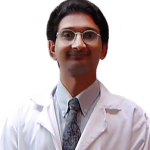Breast Abscess Drainage
Introduction
A breast abscess is a painful collection of pus that forms in the breast.
Most abscesses develop just under the skin and are caused by a bacterial infection.
Breast abscesses are painful, swollen lumps that may also:
- Be red
- Feel hot
- Cause the surrounding skin to swell
- Cause a high temperature (fever)
What causes a breast abscess?
Breast abscesses are often linked to mastitis, a condition that causes breast pain and inflammation, and usually affects women who are breastfeeding.
During breastfeeding, infections can occur if bacteria enter your breast tissue, or if the milk ducts (tiny tubes that carry milk) become blocked. This can cause mastitis which, if left untreated, can result in an abscess forming.
Sometimes, non-breastfeeding women can also develop mastitis if bacteria enter the milk ducts through a sore or cracked nipple, or a nipple piercing.
White blood cells are sent to attack the infection which causes tissue at the site of the infection to die. This creates a small, hollow area that fills with pus (an abscess).
When to visit Dr. B C Shah
See Dr. B C Shah if your breast is red and sore. If you have mastitis, you may be prescribed antibiotics to treat the infection.
If your symptoms persist after taking antibiotics, Dr. B C Shah may refer you for an ultrasound scan which will confirm whether you have a breast abscess. This type of scan uses high-frequency sound waves to create an image of the inside of your body.
Treating a breast abscess
If you have a breast abscess, it will need to be drained. Small breast abscesses can be drained using a needle and syringe. For larger abscesses, a small incision may be needed to drain the pus.
For both procedures, a local anaesthetic will usually be given to numb the skin around the abscess so you do not feel pain or discomfort.
Causes of a breast abscess
Most breast abscesses occur as a complication of mastitis, which is a bacterial infection that causes the breast to become red and inflamed.
Mastitis usually affects breastfeeding women, but it can also sometimes occur in women who are not breastfeeding.
Women who smoke cigarettes have an increased risk of developing non-breastfeeding mastitis. This condition is known as periductal mastitis.
Bacterial infection
Most abscesses are caused by a bacterial infection. The bacteria usually enter the breast through small cracks or breaks in the skin of the nipple, which can sometimes develop during breastfeeding.
Infections can also be caused by an overgrowth of bacteria that usually exist quite harmlessly within the milk ducts (the tiny tubes inside the breast that carry milk). An overgrowth of bacteria can occur if stagnant milk collects in a blocked milk duct.
When bacteria enter your body, your immune system (the body’s natural defence) tries to fight them off by sending white blood cells to the affected area. As the white blood cells attack the bacteria, some of the tissue at the site of the infection dies, creating a small, hollow pocket.
The pocket starts to fill with pus to form an abscess. The pus contains a mixture of dead tissue, white blood cells and bacteria. As the infection progresses, the abscess may get bigger and more painful as more pus is produced.
Treating a breast abscess
You should visit if your breast is red and painful.
A breast abscess is usually a complication of mastitis(inflammation of the breast).
If you have mastitis, you may be prescribed antibiotics, which are medicines used to treat bacterial infections. If your symptoms do not improve, you should return to your Dr. B C Shah.
A diagnosis will usually be confirmed using an ultrasound scan. This type of scan uses high-frequency sound waves to create an image of the inside of your body.
Draining breast abscesses
If a breast abscess is confirmed, it can usually be successfully treated by draining it.
Small abscesses can be drained using a needle and syringe. Ultrasound may be used to guide the needle into place.
For larger breast abscesses, a small incision can be made in the abscess so the pus can be drained.
During both procedures, a local anaesthetic (painkilling medication) may be used to numb the area of skin surrounding the infected breast tissue. General anaesthetic is not usually needed unless the abscess is particularly deep.
Diagnosing breast problems
Visit Dr. B C Shah if you notice any changes to your breasts, such as a breast lump or discharge (leaking fluid) from your nipples. In some cases, such symptoms could be a sign of breast cancer.
If you have a lump on your breast, you will be referred to a breast clinic for an assessment which may include an ultrasound scan and a mammogram (breast X-ray).


 Dr. Bimal Shah is the senior most General & Laparoscopic surgeon in Mira – Bhayandar with largest series of operations. He also consults at Borivali – Dahisar. He believes in ethical practice & is available at only trust hospitals. He passed out from KEM hospital, Mumbai in 1993 and was a lecturer training newer surgeons & medical students till 1998.
Dr. Bimal Shah is the senior most General & Laparoscopic surgeon in Mira – Bhayandar with largest series of operations. He also consults at Borivali – Dahisar. He believes in ethical practice & is available at only trust hospitals. He passed out from KEM hospital, Mumbai in 1993 and was a lecturer training newer surgeons & medical students till 1998. 







